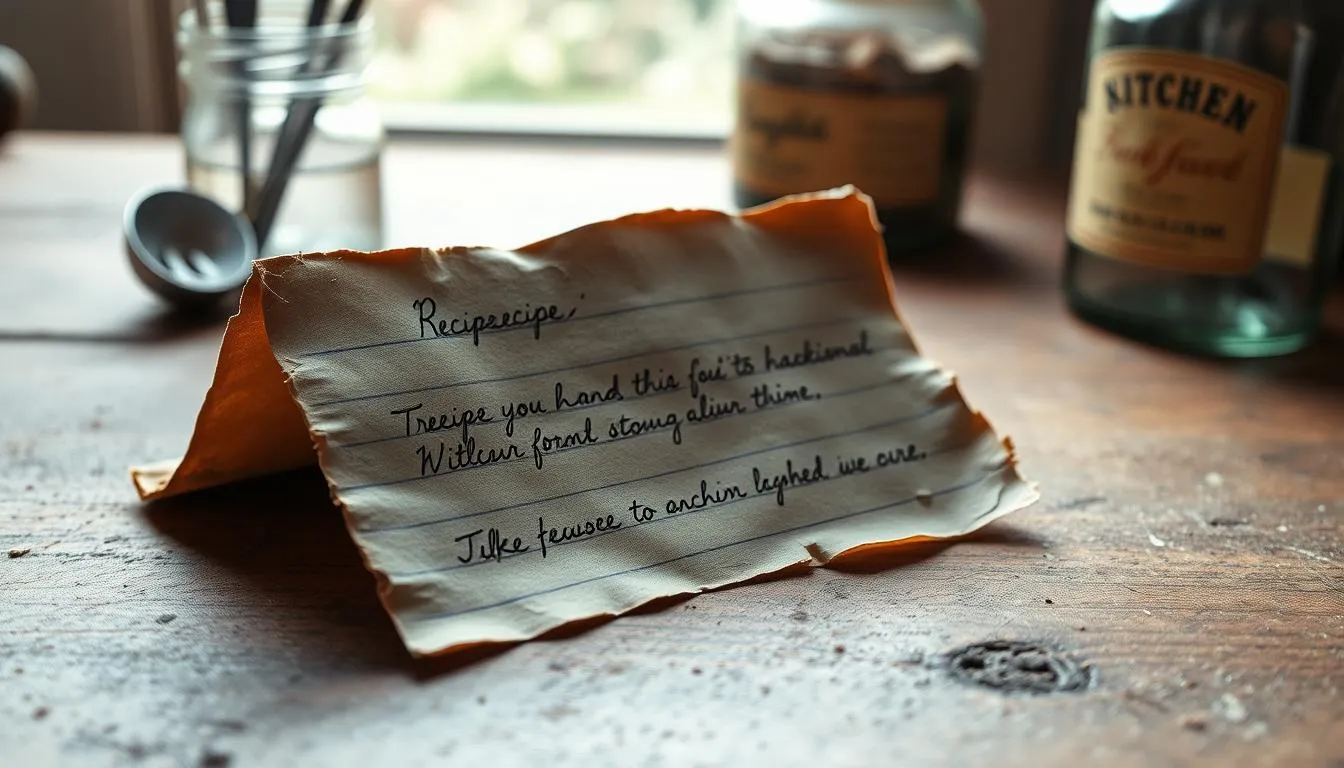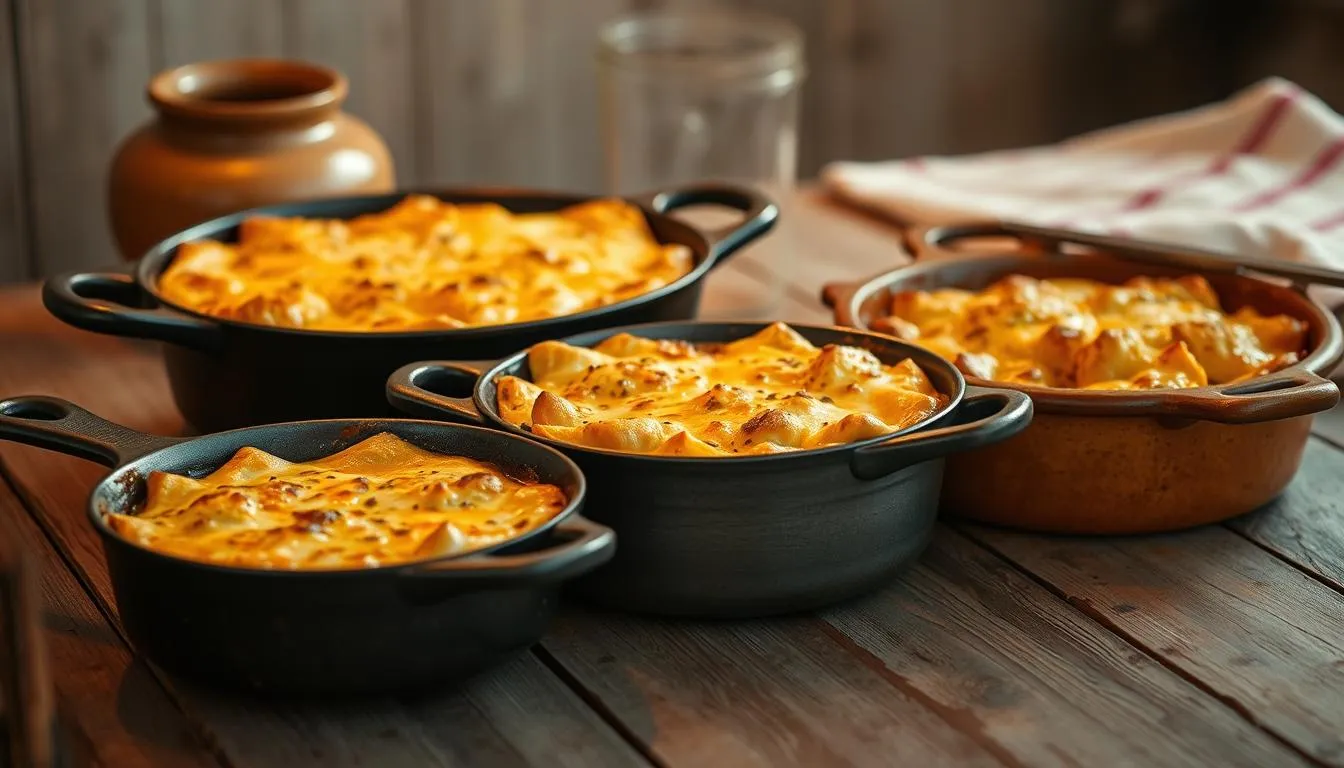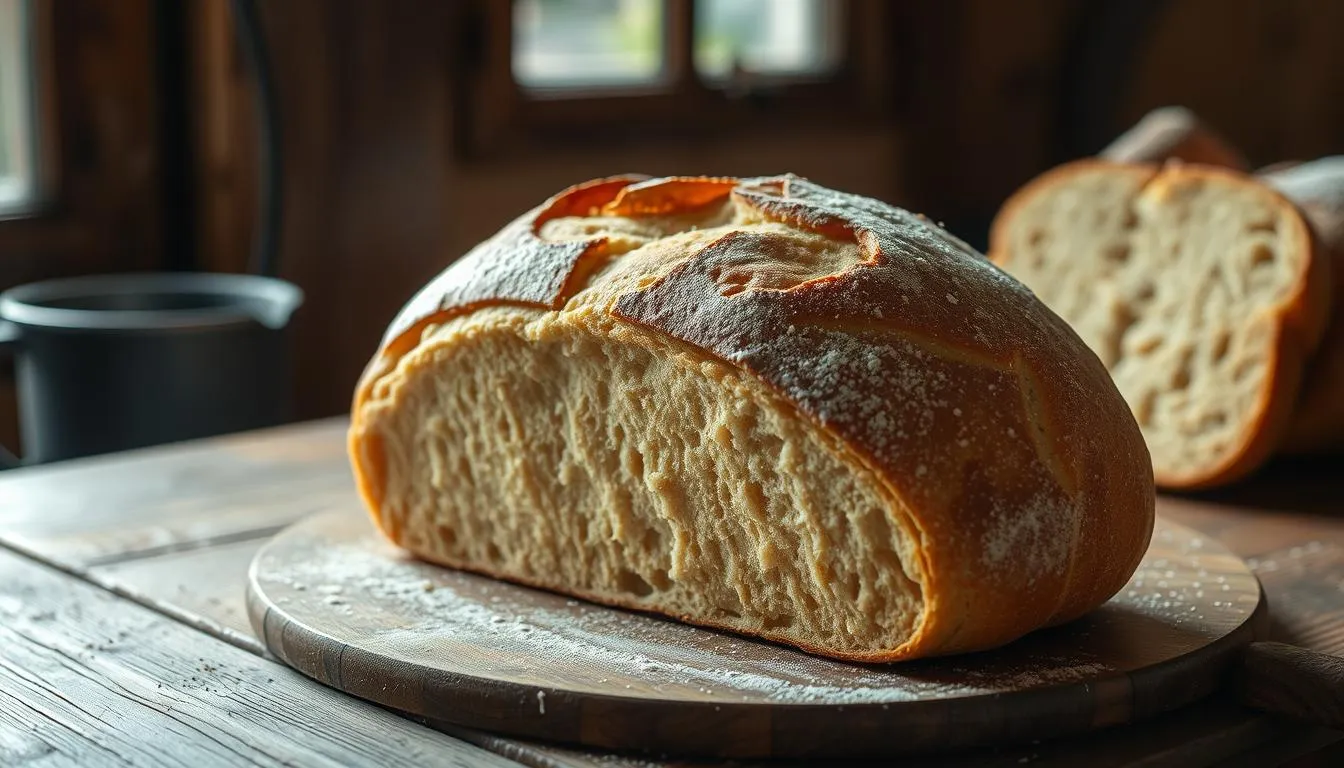Walk through the kitchen door and you might feel a warm nudge from the past. That feeling comes from dishes that once fed big families, marked a year of celebration, or smelled like Sunday at grandma’s house.
In this guide you’ll find a friendly roadmap to vintage dishes that still work today. We pull tested research and timing notes so your food turns out reliably great.
Expect clear tips for stovetop, oven, and slow-cooker methods. You’ll learn when patience pays off and where shortcuts keep the spirit alive.
This collection mixes comfort and smart planning. From melty cheese bakes to hearty soups, each pick connects to family memories while fitting a busy week.
Key Takeaways
- Practical timing and method notes make vintage dishes reliable in a modern kitchen.
- Recipes balance comfort and nutrition for weeknight meals and gatherings.
- Simple techniques like caramelizing and toasting add big flavor with little fuss.
- Make-ahead and storage tips help you cook once and enjoy a lot across the week.
- Each dish is chosen so it translates into today’s home without special gear.
Nostalgic flavors meet today’s kitchens
A few deliberate moves in the kitchen let classic flavors land perfectly in today’s homes. Simple techniques—like caramelizing onions for a French Onion Chicken skillet (≈30 minutes), simmering beans for Pasulj (≈1 hour), or letting lentils and rice meld in Mujadara (≈45 minutes)—build deep, layered taste from pantry staples.
Family meals benefit most from this patient approach. Low-and-slow heat, a short rest for dough, or a quick toast of grains gives big payoffs without extra fuss. These small steps translate into reliable results for weeknight or weekend plans.
- Work smarter with time: set-and-forget slow-cooker starts or a 30-minute skillet finish.
- Balance richness: add pickled or fresh notes—dill, vinegar, or lemon—to keep plates bright.
- Inclusion: flexible bases welcome dietary swaps so everyone—man, child, or elder—can enjoy the meal.
“Good kitchen wisdom is not about complexity; it’s about knowing when a short extra minute makes a dish sing.”
Retro cooking recipes
A strong technique can turn humble ingredients into a meal that feels both familiar and fresh.
What makes a dish enduring often comes down to method more than trend. We define this kind of dish as one built on slow simmering, careful layering, or hand-shaped dough. These moves deliver big flavor with simple, accessible ingredients.
What makes a dish timeless yet relevant today
Classic dishes earn their place because they teach kitchen sense—listening for sizzles and watching for color. A single-pot stew like Ajiaco or a baked kugel shows how economy meets reward.
On this page we show how a recipe becomes useful in modern life: flexible timing, ingredient swaps, and clear order of operations backed by research on cook times.
Classic techniques that stand the test of time
Deep browning builds flavor fast. Gentle, long heat breaks down tough cuts. Toasting grains adds a toasty note that lifts simple bowls.

| Technique | Why it matters | Representative dish |
|---|---|---|
| Slow simmer | Tenderizes meat, concentrates broth | Ajiaco / Osso Buco |
| Deep browning | Creates umami and color | French Onion Chicken Skillet |
| Layered baking | Sets texture, melds flavors | Matzo Lasagna / Kugel |
| Toasting grains | Adds nutty aroma and bite | Buckwheat Kasha |
“Good technique turns a few ingredients into a lasting meal.”
Old-world soups and stews that warm the whole family
Old-world stews bring simple ingredients together into one warm, honest bowl. These pots balance texture and depth with straightforward technique. Gentle heat, good stock, and a bit of patience turn pantry staples into memorable meals.
Homemade Matzo Ball Soup — tender texture, slow-simmered comfort
Tip: Simmer dumplings 30–40 minutes so they stay soft and tender. This recipe centers on texture more than speed.
Ajiaco Colombiano — chicken, potato, and corn harmony
Use a mix of potato types and let the pot simmer about an hour. Each spoonful should feel layered and thick, a true comfort dish.
Chicken Sancocho — a hearty family dinner with depth
Sancocho combines chicken, potato, corn, and plantains. Simmer roughly one hour for a rich, one-pot dinner that feeds a crowd.
Pasulj Serbian White Bean Soup — slow-cooked beans with paprika
Soak beans, then simmer with tomatoes and paprika for about an hour until the soup clings to the spoon. Finish with a squeeze of acid to brighten flavors.
Practical notes: Sweat an onion and aromatics gently to build depth. Batch stock ahead to save time and finish dishes without stress. Serve with bread or rice to stretch portions.
| Soup | Key ingredients | Simmer time | Serving idea |
|---|---|---|---|
| Matzo Ball Soup | Matzo dumplings, chicken broth | 30–40 min | Crusty bread |
| Ajiaco | Chicken, mixed potatoes, corn | ≈1 hour | White rice |
| Chicken Sancocho | Chicken, potato, corn, plantain | ≈1 hour | Cilantro and lime |
| Pasulj | White beans, tomatoes, paprika | ≈1 hour | Pickled peppers |
“Small, patient steps in the pot reward you with big, comforting flavor.”
Skillets and casseroles: oven-baked classics with cheese and sauce
Oven-baked one-pan dishes turn simple ingredients into a bubbly, homey meal with very little fuss.
 These recipes focus on fault-tolerant technique: brown, layer, and bake. Each dish finishes with glossy cheese or a savory sauce that brings it together.
These recipes focus on fault-tolerant technique: brown, layer, and bake. Each dish finishes with glossy cheese or a savory sauce that brings it together.
French Onion Chicken Skillet — caramelized onion, melty cheese payoff
Brown chicken first, then simmer with deeply caramelized onions. Top with cheese and let it meld into a glossy sauce. Total time: ~30 minutes.
Cheesy Chicken and Potato Bake — golden top, creamy center
Layer cooked chicken pieces with thinly sliced potatoes in one casserole. Bake about 50 minutes until the top is golden and bubbling.
Mushroom Leek Pasta Kugel — crisp-topped vintage casserole
Mix mushrooms, leeks, and pasta with a light custard. Bake ~45 minutes to set the interior and crisp the noodles on top.
- Moisture balance: test the center with a skewer so sauce clings without breaking.
- Oven cues: rack position and pan type change browning—lower rack for crisp tops, middle for even bake.
- Night-friendly prep: assemble earlier, refrigerate, then bake fresh before serving.
- Scaling: move from a small pan to a crowd-size dish without losing that bubbly finish.
“Simple layering and a short bake bring restaurant-style comfort to home weeknights.”
Potato-forward retro dishes with texture and heart
Potatoes take center stage in dishes that prize comfort, contrast, and simple technique.
Potato Vegetarian Vareniki showcase how a soft filling and the right dough make a memorable meal. Mix mashed potato with a touch of butter and salt, then wrap in a pliable dough. Rest the dough, roll thin, and seal the edges well so each dumpling holds its shape.
Potato Vegetarian Vareniki — dough-wrapped comfort boiled to tender
Boil the vareniki in simmering water; once shaped they cook in under 10 minutes. Toss hot dumplings with butter for a silky finish and add cracked pepper or herbs to brighten the flavors.
Sheet Pan Paprika Chicken and Veggies — potatoes meet smoky spice
Arrange chicken, halved potatoes, and chopped vegetables on one tray. Bloom paprika in oil first to deepen its aroma, then roast at 400°F for about 40 minutes until edges are crisp and centers are tender.
- Texture tips: choose fluffy potatoes for mash, waxy for slices, or a mid-type for both tender interior and slight bite.
- Flavor tips: salt potatoes before roasting and toss vegetables with a little oil so seasonings penetrate.
- Make-ahead: pre-mix fillings, pre-chop veg, and stage pans to speed up weeknight meals today.
“A little technique—resting dough, blooming spices—turns simple potatoes into a homey, reliable meal.”
Breads, crusts, and clever layers from the vintage playbook
From paper-thin dough to pantry layers, these baked dishes prove patience pays off. Simple bench work and straight-forward timing turn staples into showstoppers.

Matzo Lasagna with Cottage Cheese — pantry-smart layering
Matzo Lasagna stacks matzo, seasoned cottage cheese, and tomato sauce. Bake about 45 minutes so the top bubbles and the sheets soften without going soggy.
Use a light brush of sauce between sheets and season the cottage cheese with herbs, salt, and a squeeze of lemon. These baby steps keep texture and flavor in balance.
Bosnian Pita Pie — hand-stretched dough, oven-baked satisfaction
Bosnian Pita Pie uses dough stretched almost paper-thin, filled, rolled, and baked until crisp outside and steamy inside. Rest the dough to relax gluten for easier stretching.
Inclusion note: swap fillings for vegetarian or dairy-free options to suit the table. Serve with a crisp salad or warm bread for a simple, complete plate.
- Practical tip: rest dough 20–30 minutes for reliable stretch.
- Flavor tip: season fillings well so layers sing.
- Serving: this page pairs both dishes with light sides for balance.
“Layer well, rest dough, and let the oven finish the work.”
Beans, grains, and budget-friendly wisdom
Pantry grains and legumes turn humble staples into steady, flavorful meals that stretch a budget.
Mujadara — lentils, rice, and golden onions for everyday comfort
Mujadara simmers lentils and rice together, then finishes with sweet, caramelized onions. This method takes about 45 minutes from pantry staples to plate.
Rinse lentils and rice, use a gentle simmer, and time both so they stay distinct, not mushy. Finish with a drizzle of olive oil and a sprinkle of fresh herbs for a simple, satisfying meal.
Buckwheat Kasha with Caramelized Mushrooms and Onions — toasty grains, deep flavor
Toast buckwheat first to wake up nutty aromas, then simmer with slowly browned mushrooms and onions. The dish comes together in under an hour.
Season carefully and rest a few minutes so textures set. Top with yogurt or lemon to lift the bowl and add contrast to the rich grains.
| Dish | Key steps | Total time | Serve with |
|---|---|---|---|
| Mujadara | Simmer lentils + rice, top with caramelized onions | ≈45 min | Yogurt, pickles |
| Buckwheat Kasha | Toast buckwheat, sauté mushrooms and onions, simmer | Fresh herbs, lemon | |
| Practical tip | Rinse, toast, rest to lock texture | — | Leftovers for lunches |
Quick notes: These recipes use few ingredients but reward a bit of patience. Small steps in rinsing, toasting, and timing add layered flavor and real kitchen wisdom.
“Stretching simple staples into a full meal is smart, tasty, and kind to the wallet.”
Seafood the old-fashioned way
Try two classic fish preparations that make weeknight seafood feel both elegant and easy. These dishes focus on simple technique and bright finishes so the main ingredient can sing.
Colombian Whole Fried Mojarra Frita — crisp skin, juicy interior
Technique: Score and season a whole fish, then pan-fry over high heat about 15 minutes until the skin crackles and the flesh stays moist. Finish with lime and a touch of spices.
Scoring helps seasoning reach the thickest parts while protecting moisture during the sear. This quick method makes a single-pan recipe that shows how restraint boosts texture.
Bruges Egg Savory with Prawns — elegant oven-baked with bread for dipping
This vintage dish (Good Housekeeping’s World Cookery, 1972) layers hard-boiled eggs and prawns in a light bake that forms a spoonable sauce. Boil eggs a day ahead to speed assembly.
Serve: plenty of crusty bread so diners can soak the warm sauce and enjoy the melded flavors. Gentle baking preserves the delicate character of seafood while marrying creamy and savory elements.
- Prep today: pre-boil eggs and measure key ingredients for faster cooking later.
- Serving tip: slice the fish and offer wedges of lime so guests tailor the finish.
“Simple technique and fresh ingredients make memorable seafood that’s easy to share.”
Slow cooker classics that cook while you live your day
A slow cooker gives you hands-off rhythm—simple prep in the AM, fork-tender results by night.
These low-and-slow dishes reward minimal effort with big flavor. Use gentle heat and a clear plan so the pot delivers a reliable weeknight or weekend dinner. Below are two kinds of slow cooker recipes that fit a busy life and let time do the work.
Greek Chicken — bold seasoning, fall-apart tender
Set the chicken, lemon, olives, and herbs in the slow cooker and let it cook about 6 hours for a fall-apart finish. This recipe rewards a quick morning toss-in and fills the house with bright, savory aromas by evening.
Tips: brown pieces first if you have 10 extra minutes for deeper color. If short on time, skip browning—seasoning still shines after slow heat. Finish with a squeeze of lemon and fresh herbs to lift the long-cooked flavors.
Osso Buco — beef shanks transformed over time
Cook beef shanks with wine and vegetables for 6–8 hours so connective tissue melts and the sauce thickens. The gentle long time turns inexpensive beef into fork-tender portions that pair well with polenta, rice, or pasta.
- Night-before prep: chop veg and measure spices to speed the morning start.
- Liquid ratios: keep liquids just below the meat line to avoid a watery result.
- Portioning: scale for a series of meals—save one pan for a reheated dinner later in the week.
“Let slow heat build depth; finish with acid or herbs to wake the pot’s long-cooked flavors.”
Chilled sides and salads that bring balance
Cold plates add brightness and contrast to hearty mains. They refresh the palate and make a meal feel lighter without extra fuss.
Marinated Beet Salad with Dill — vinegar, onion, and bright herbs
This marinated beet salad is an easy make-ahead anchor: boil or roast beets, slice them, then toss with vinegar, thin onion, and fresh dill. Chill several hours so the dressing infuses and the flavors settle.
Roasting deepens sweetness and gives a firmer texture. Boiling keeps the beets tender and lets the vinegar come forward. Choose the method that fits your menu today.
- Dressing ratio: about 3 parts oil to 1 part vinegar, a pinch of salt, and a spoon of minced onion to keep flavors bright.
- Ingredient swaps: try citrus zest or a teaspoon of horseradish for a lift.
- Storage: the salad holds well for days, so it’s great for lunches or pairing with richer mains.
| Step | Method | Effect |
|---|---|---|
| Roast beets | 400°F, 45–60 min | Caramelized sweetness, firmer bite |
| Boil beets | Simmer 30–40 min | Tender, mild flavor that soaks dressing |
| Marinate | Chill 3+ hours | Balanced, melded flavors for serving |
“Make-ahead chilled sides save time and lift every course.”
Holiday and heritage dishes that tell a story
Certain holiday plates act as timekeepers, linking one year’s celebration to the next. These dishes carry ritual, texture, and small steps that reward patience and practice.
Homemade Gefilte Fish depends on gentle technique and careful shaping. Mix ground fish with matzo meal and seasonings, then form even portions so they poach consistently.
Homemade Gefilte Fish — careful shaping, patient simmering
Tip: poach on a low, even simmer for about one hour to reach a tender, delicate texture without becoming dense.
Season the mix lightly, form smooth oval portions, and nestle them into simmering broth. Keep the heat steady so pieces set without cracking.
- Use matzo meal to bind without heaviness.
- Gently ladle broth over pieces during the first 20 minutes to encourage even poaching.
Chicken Colombian Tamales — banana-leaf parcels of tradition
These tamales wrap seasoned chicken and a cornmeal masa in banana leaves, then steam about an hour. The leaves add aroma and keep fillings moist while they cook.
- Layering matters: spread masa, add filling, fold leaves snugly for an even steam.
- Stage work across days: prep filling one day, assemble and steam the next to make the process calm for the family.
Why it matters: both dishes link flavor and ritual. They show how book-era methods and simple staging preserve authenticity while keeping steps clear for modern cooks.
“Food that marks a year anchors memories and helps families pass tradition forward.”
Sips with a retro twist
A chilled pitcher can turn a backyard meal into a small, festive moment with very little fuss. This short section highlights an iced tea cocktail vibe that pairs well with hearty plates on a warm day. It’s a nod to the 1970s Smirnoff Ice Pick and National Iced Tea Day without feeling fussy.
Smirnoff Ice Pick vibe — a nod to classic iced tea cocktails
Quick assembly: pour spirit, iced tea, and lemon into a pitcher, stir, and serve over ice. That one step keeps hosting easy so you can keep the focus on food and conversation.
Garnish and glassware: a lemon wheel, mint sprig, and a tall Collins glass feel vintage without costing effort. These small touches open the door to a pleasing table look.
Cultural notes: book-era bar guides and pop culture tie-ins give this drink a fun backstory to share. Mentioning a well-known book or moment can spark chat while guests sip.
- Pair with salty, savory snacks and a crisp salad for balance.
- Batch by mixing one part spirit to three parts iced tea; test dilution with ice before serving a crowd.
- If a man at the table prefers less sweet, add extra brewed tea for a brighter finish.
“Pour, stir, and serve — and let the day unfold.”
Conclusion
This collection leaves you with clear steps to turn a few pantry staples into a dependable, year-round menu,
Use the vintage techniques here to guide a single evening or a whole day of cooking. Aim for the textures we call out—crisp-topped casseroles, tender dumplings, flaky fish—and finish with a bright herb, a sprinkle of cheese, or warm bread for soaking sauce.
Whether you want a quick pan fry, a slow beef braise, or a potato-forward bake, these dishes scale for one or a crowd. Keep a short pantry list and the oven or slow pot ready, and you’ll find this kind of food returns again and again in a happy, inclusive series of meals.
FAQ
What types of dishes are covered in “Retro Cooking Recipes: Timeless Meals for Modern Homes”?
The collection spans soups and stews, oven-baked skillets and casseroles, potato-forward plates, breads and layered pies, beans and grains, seafood preparations, slow-cooker classics, chilled sides and salads, heritage holiday fare, and a few vintage-style drinks. It focuses on flavorful, time-tested techniques you can use in a contemporary kitchen.
How can a recipe feel nostalgic but still work in a modern home?
A dish becomes relevant when you preserve its core flavors and techniques while updating ingredients, timing, or equipment for today’s kitchens. For example, swapping heavy cream for a lighter alternative, using an air fryer or slow cooker, or shortening long braises without losing depth keeps the spirit of the original but fits modern lifestyles.
Are these dishes suitable for weeknight meals or mainly for special occasions?
Many recipes are family-friendly and designed for weeknights—think skillet meals, sheet-pan dinners, and slow-cooker options that cook while you live your day. Others, like layered pies or holiday specialties, are perfect for weekends or celebrations when you have a bit more time and love the ritual of cooking.
Do the recipes include vegetarian or vegan options?
Yes. Several dishes focus on plant-forward ingredients like mujaddara (lentils and rice), buckwheat kasha with mushrooms, and potato vareniki. Many recipes can be adapted easily by swapping animal proteins for legumes, hearty mushrooms, or dairy substitutes without losing texture or flavor.
Will the recipes specify equipment and oven temperatures for reliable results?
Every recipe lists the essential equipment—skillet, Dutch oven, slow cooker, sheet pan, or oven—and includes clear temperatures and timing. Where modern appliances matter (convection vs. standard oven, air fryer tips, or slow-cooker settings), notes are provided to help you adapt and succeed.
How can I make these vintage dishes healthier without ruining their character?
Keep the core technique and flavor-building steps—caramelizing onions, slow-simmering, or toasting grains—then make targeted swaps: trim excess fat from meats, use low-sodium broths, add extra vegetables, and choose whole-grain or legume-based sides. Small changes preserve texture and taste while improving nutrition.
Are there clear instructions for making traditional breads and layered dishes like Bosnian pita or matzo lasagna?
Yes. The recipes break each process into manageable steps, from hand-stretching dough to layering and baking. Tips cover dough resting, handling delicate sheets, and ways to use pantry staples like cottage cheese or ricotta for accessible results.
Do the recipes include safety tips for working with whole fish, poultry, and slow-cooked beef shanks?
Safety and doneness are emphasized. Instructions specify safe internal temperatures, handling guidance for whole fish and poultry, and best practices for long braises—like searing meat first and monitoring liquid levels—to ensure both flavor and food safety.
Can I scale recipes up for larger family gatherings or down for two people?
Yes. Most recipes include scaling guidance and timing adjustments. For oven-baked dishes, use similar pan depths to maintain texture. For slow cooker and stovetop recipes, reduce cooking liquid proportionally and check doneness earlier when quantities are smaller.
Are there pairing suggestions for sides and drinks with each dish?
Pairing notes are offered for many entries—simple salads or pickles to balance rich casseroles, crusty breads for soups, and modest cocktail ideas inspired by retro drinks like an iced tea–style Smirnoff Ice Pick vibe. Suggestions aim to make complete, balanced meals without fuss.
Where do the recipe inspirations and techniques come from?
The recipes draw from a wide range of culinary traditions—Eastern European, Colombian, Balkan, Mediterranean, and classic American home cooking. Techniques include slow-simmering, caramelization, braising, hand-stretched dough, and oven baking, preserved for their proven results and comforting flavors.
Are ingredient substitutions and allergy-friendly notes provided?
Yes. Each recipe includes common substitutions (gluten-free flour, dairy-free cheeses, or plant-based proteins) and allergy notes to help you adapt dishes while keeping texture and taste intact. Where substitutions affect cooking times or structure, specific tips are given.
How does the book handle traditional holiday and heritage recipes like gefilte fish or Colombian tamales?
These recipes honor cultural techniques and include background notes on tradition and variations. Detailed, step-by-step instructions and timing cues help home cooks approach these projects with confidence and respect for the original methods.
Will I find budget-friendly meal ideas in the collection?
Absolutely. Sections on beans, grains, and potato-forward dishes highlight low-cost, high-flavor options such as mujaddara, buckwheat kasha, and hearty bean soups. The focus is on smart pantry use and recipes that stretch ingredients for families on a budget.
